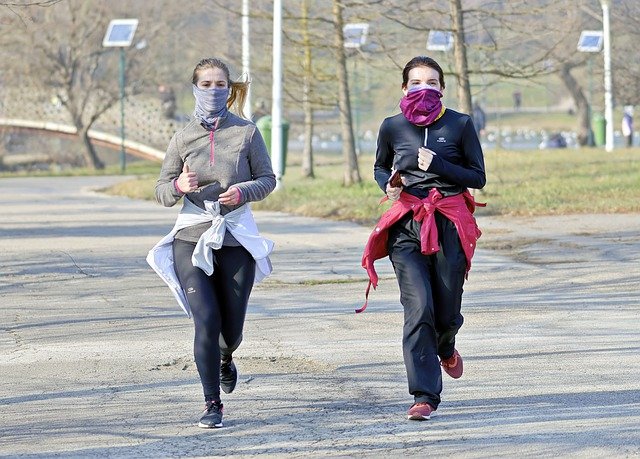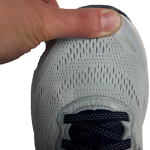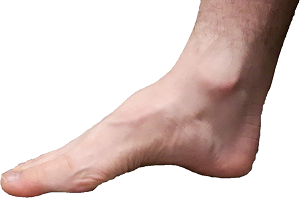
Foot Tips for New Exercise Routines
Is exercise a part of your new year resolution? Walking, running, weight lifting or any increase in activity level? Any time you start a new exercise routine, it is important to be aware of your body to prevent injury from occurring. Looking at your feet, there are a few preventative steps to take prior to starting your new exercise routine.
Footwear for a New Exercise Routine
Wearing the appropriate shoe for exercise is an important first step when starting a new exercise routine. It is important to wear the appropriate shoe for the activity, as well as finding a shoe that fits right.
Walking
When determining which shoe is the best for you, first consider the type of activity you are going to be doing. If your new exercise routine consists of walking, a walking shoe may be a good choice. This shoe has a few features that makes walking a more comfortable experience.
First, it has a wider base of support to help with balance. This may be a more important consideration in the winter to keep your balance during icy patches.
Another great feature in a walking shoe is the solid midsole (thick base of the shoe). To check for a solid midsole, the shoe will resist the force of your hands when attempting to bend the shoe in half. This solid midsole prevents your foot from moving around too much, which can contribute to issues stated in the section below (“Get your feet checked”).
Another common feature in a walking shoe is the rocker sole. A rocker sole has a sharper curve at the front of the shoe, which propels your foot forward when taking a step. In addition to helping with the walking cycle, it takes pressure away from the ball of the foot. If you have any pain or issues with the ball of the foot, this is an important feature to consider.
Running
If you are going to be running or performing more high impact activities, a running shoe is a good choice. A running shoe is lighter than a walking shoe, which prevents you from tiring as quickly when moving around at a quicker pace. When finding the right running shoe for you, make sure there is a solid midsole. This midsole may not be as strong as a walking shoe, but it should not bend in half when forcing it with your hands.
Shoe Fit

Once you have found the correct style of shoe for your activity, make sure it fits properly. Consider three different areas when fitting a shoe: length, width and depth.
The length should leave a thumb width (about ½”) between your longest toe and the end of the shoe. Be aware if your second toe is the longest.
The width should fit to the sides of your feet, but not allowing your feet to bulge over the sides of the shoe. A good way to check this, is take out the original insole and stand on it. The sides of the feet should not be bulging over the sides of the insole. Look for shoes that have different widths available, which are indicated by letters. Narrow shoes are typically an A or B, where wider shoes will be a D or E. Wider shoes than an E are indicated by multiple Es and narrower shoes are indicated by multiple As.
The depth can be harder to find as all shoes are slightly different, but it can be easily adjusted. If your foot is sliding forward or your heel is sliding out, the depth may be the issue. If this is the case, an extra insert can be added to the shoe to address the depth.
Get your feet checked before starting a new exercise routine
Even if you’ve never had pain in your feet, knees, hips or lower back, it is a good idea to get your feet checked out. When starting a new exercise routine, more stress is put on the body, which can present an underlying issue that you were unaware of.

If you have a low arch (collapse/rolling in), it can strain the structures under your feet, along the inside of the feet and ankles, and higher up the chain. When your feet roll in while you walk, the lower leg and upper leg also roll in, which can put strain on your knees, hips and lower back. Exercise can exaggerate all this because there is more pressure on your feet, which can collapse them even further.

A high arch can also lead to issues due to rolling out or lack of shock absorption. If your feet roll out, exercise can exaggerate this motion by pushing your feet out even further. When your feet roll out, your lower leg and upper leg also roll out. This puts strain on your knees, hips and lower back. The lack of shock absorption can also become as issue. When you exercise, this excessive shock needs to be absorbed somewhere. If the natural motion of the feet does not absorb the shock, it may get pushed into structures in the feet, knees or higher up.
Other
Muscle or other structural imbalances can also exaggerate improper foot mechanics, leading to more issues and pain. A physiotherapist and/or chiropractor may be another health professional to seek out before starting a new exercise routine.
Finding the appropriate exercise routine with a warm up and cool down is another important consideration. If you are not comfortable in making your own routines, finding an expert to help you may be beneficial.
If you have already started your exercise routine without these considerations, it is never too late to take care of your feet!
Feel free to contact us with any questions!

You must be logged in to post a comment.